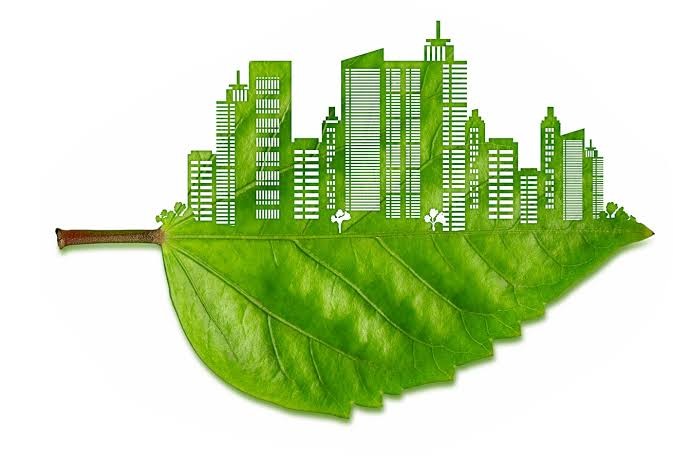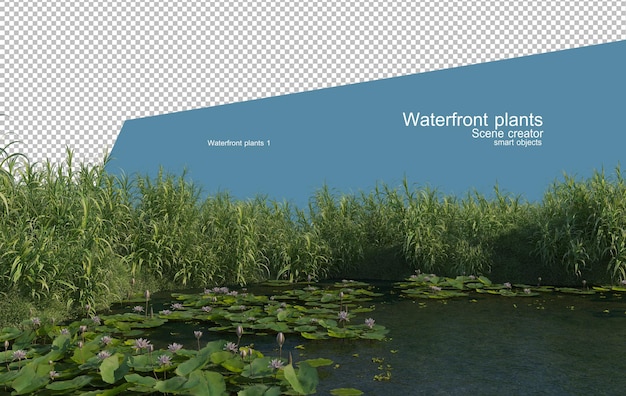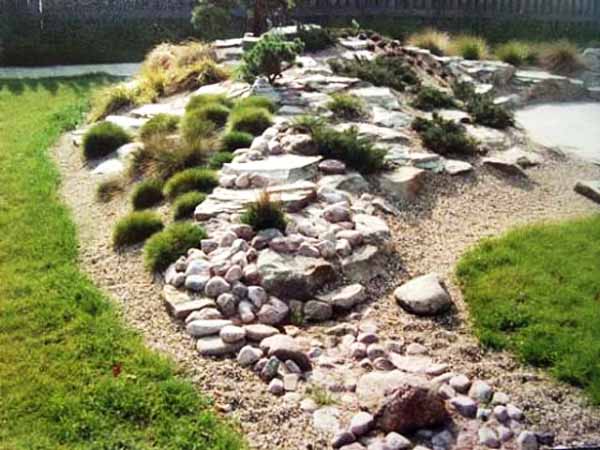
Introduction: Planting the Seeds of Sustainability
The world is changing, and with it, our understanding of how we interact with the environment. For too long, construction practices, including landscaping, have often prioritized immediate gains over long-term sustainability. But the tide is turning. More and more, homeowners, businesses, and communities are recognizing the crucial importance of creating landscapes that not only enhance beauty but also contribute to the health of our planet. This shift has given rise to a growing demand for sustainable landscape construction methods – approaches that minimize environmental impact, conserve resources, and foster biodiversity.
This article delves into the essential aspects of sustainable landscape construction. We’ll explore a range of techniques, materials, and design principles that can transform ordinary spaces into thriving ecosystems. Whether you’re a seasoned landscape architect, a DIY enthusiast, or simply someone passionate about creating a greener future, you’ll discover valuable insights and actionable steps to incorporate sustainability into your next landscaping project.
Understanding the Pillars of Sustainable Landscape Construction
Sustainable landscape construction is not just a trend; it’s a fundamental shift in how we approach the creation and maintenance of outdoor spaces. It rests upon several core principles:
- Resource Conservation: Minimizing the consumption of water, energy, and raw materials. This includes using water-efficient irrigation systems, choosing locally sourced and recycled materials, and reducing waste.
- Environmental Protection: Protecting and enhancing the natural environment. This encompasses preserving existing ecosystems, preventing pollution, and minimizing the use of harmful chemicals.
- Biodiversity Enhancement: Creating habitats that support a diverse range of plant and animal life. This involves selecting native plants, providing shelter and food sources, and avoiding practices that disrupt natural ecosystems.
- Long-Term Durability and Resilience: Designing landscapes that are built to last and can withstand environmental challenges. This includes using durable materials, implementing erosion control measures, and considering the long-term maintenance needs of the landscape.
- Social Responsibility: Considering the social impact of landscaping projects, such as providing job opportunities, promoting community engagement, and creating accessible and inclusive spaces.
By adhering to these principles, we can create landscapes that are not only beautiful but also contribute to a healthier planet and a more sustainable future.
Sustainable Design and Planning: Laying the Foundation for Success
The design phase is the cornerstone of any sustainable landscaping project. Careful planning and thoughtful design choices can significantly reduce environmental impact and ensure the long-term success of the landscape. Here are some key considerations:
Site Analysis and Assessment
Before any construction begins, a thorough site analysis is essential. This involves:
- Evaluating Existing Conditions: Assessing the existing vegetation, soil type, topography, and drainage patterns. Identify any existing natural features to be preserved, such as trees, wetlands, or rock outcroppings.
- Understanding the Microclimate: Analyzing the site’s sun exposure, wind patterns, and temperature variations. This information will inform plant selection and help optimize energy efficiency.
- Identifying Potential Challenges: Recognizing any potential challenges, such as erosion risks, poor drainage, or soil contamination. This allows you to develop strategies to mitigate these issues.
Water Management Strategies
Water conservation is a critical aspect of sustainable landscaping. Implementing these strategies can drastically reduce water usage:
- Rainwater Harvesting: Collecting rainwater from roofs and other surfaces for irrigation purposes. This can significantly reduce reliance on municipal water sources.
- Xeriscaping: Designing landscapes that require minimal or no supplemental irrigation. This involves using drought-tolerant plants, grouping plants with similar water needs, and using mulch to retain moisture.
- Efficient Irrigation Systems: Installing water-efficient irrigation systems, such as drip irrigation or micro-sprinklers, that deliver water directly to plant roots. Using smart controllers that adjust watering schedules based on weather conditions can also save water.
- Soil Improvement: Improving soil health by adding organic matter, such as compost, to enhance its water-holding capacity.
Plant Selection: Choosing the Right Plants for the Right Place
Plant selection plays a crucial role in the sustainability of a landscape. Choose plants that are:
- Native or Adapted: Native plants are best suited to the local climate and require less water, fertilizer, and pesticides. Adapted plants are non-native plants that have proven to thrive in the local conditions.
- Drought-Tolerant: Selecting plants that can withstand periods of drought reduces the need for irrigation.
- Low-Maintenance: Choosing plants that require minimal pruning, fertilizing, and pest control reduces the need for resources and labor.
- Diverse: Planting a variety of plant species creates a more resilient and biodiverse ecosystem.
Material Selection: Making Eco-Conscious Choices
The materials used in landscape construction can have a significant impact on the environment. Consider these factors when selecting materials:
- Locally Sourced Materials: Sourcing materials from local suppliers reduces transportation costs and emissions.
- Recycled and Reclaimed Materials: Using recycled materials, such as crushed concrete or recycled plastic lumber, reduces waste and conserves resources.
- Durable and Long-Lasting Materials: Choosing durable materials that require minimal maintenance reduces the need for replacements and waste.
- Non-Toxic and Environmentally Friendly Materials: Avoiding materials that contain harmful chemicals or pollutants.
Sustainable Construction Techniques: Building with the Environment in Mind
Once the design is finalized, the construction phase requires careful attention to sustainable practices. Here are some key techniques to consider:
Soil Management
Healthy soil is the foundation of a thriving landscape. Implement these soil management practices:
- Soil Testing: Conducting soil tests to determine the soil’s composition, pH, and nutrient levels. This information will inform soil amendments and plant selection.
- Soil Amendment: Adding organic matter, such as compost or manure, to improve soil structure, water-holding capacity, and nutrient content.
- Compaction Prevention: Minimizing soil compaction during construction by using proper equipment and techniques.
- Erosion Control: Implementing erosion control measures, such as silt fences, straw bales, or erosion control blankets, to prevent soil loss.
Water Management During Construction
Protecting water resources during construction is crucial:
- Erosion and Sediment Control: Implementing best management practices (BMPs) to prevent soil erosion and sediment runoff into waterways.
- Water Conservation: Using water-efficient construction techniques, such as dust suppression with reclaimed water.
Material Handling and Waste Management
Proper material handling and waste management can significantly reduce environmental impact:
- Material Reuse: Reusing materials whenever possible, such as salvaging existing pavers or using wood from salvaged trees.
- Recycling and Composting: Recycling construction waste, such as concrete, metal, and wood. Composting organic waste, such as plant debris.
- Waste Reduction: Minimizing waste generation by carefully planning material quantities and using efficient construction techniques.
Energy Efficiency
Reducing energy consumption during construction is essential:
- Using Energy-Efficient Equipment: Using fuel-efficient construction equipment and power tools.
- Renewable Energy: Utilizing renewable energy sources, such as solar power, to power construction equipment and operations.
Sustainable Materials: Building Blocks for a Greener Future
The choice of materials plays a pivotal role in the sustainability of a landscape. Here are some sustainable material options:
Paving Materials
- Permeable Pavements: Permeable pavements, such as permeable pavers or porous concrete, allow rainwater to infiltrate the soil, reducing runoff and replenishing groundwater.
- Recycled Asphalt and Concrete: Using recycled asphalt and concrete for paving reduces waste and conserves resources.
- Natural Stone: Natural stone, such as granite or slate, is a durable and long-lasting material that can be sourced locally.
- Wood Decking (Sustainable Sources): Opt for decking made from reclaimed wood or wood certified by the Forest Stewardship Council (FSC).
Hardscape Elements
- Recycled Glass Aggregate: Using recycled glass aggregate for pathways or decorative features.
- Reclaimed Wood: Reclaiming wood from old structures for use in benches, planters, or other features.
- Sustainable Lumber: Using lumber from sustainably managed forests, such as FSC-certified wood.
Planting Materials
- Native Plants: Native plants require less water, fertilizer, and pesticides, and they provide habitat for local wildlife.
- Compost and Mulch: Using compost and mulch improves soil health, conserves water, and reduces the need for fertilizers.
Other Sustainable Materials
- Recycled Plastic Lumber: Using recycled plastic lumber for decking, fencing, or other applications.
- Low-VOC Paints and Sealants: Using low-VOC (volatile organic compound) paints and sealants to minimize air pollution.
Water-Wise Landscaping Techniques: Conserving a Precious Resource
Water conservation is a cornerstone of sustainable landscaping. Here are some effective water-wise landscaping techniques:
Xeriscaping Principles
Xeriscaping is a landscaping approach that minimizes water usage. It involves:
- Planning and Design: Creating a detailed plan that considers the site’s conditions and water needs.
- Soil Improvement: Improving soil structure to enhance water infiltration and retention.
- Efficient Irrigation: Using water-efficient irrigation systems, such as drip irrigation or micro-sprinklers.
- Plant Selection: Choosing drought-tolerant plants that are well-suited to the local climate.
- Mulching: Applying mulch to retain moisture in the soil and reduce evaporation.
- Turf Alternatives: Reducing or eliminating turfgrass, which requires significant water and maintenance.
- Maintenance: Regularly maintaining the landscape to ensure its water efficiency.
Rainwater Harvesting Systems
Rainwater harvesting systems collect and store rainwater for irrigation and other uses. These systems:
- Reduce Reliance on Municipal Water: Significantly reduce the demand for potable water.
- Conserve Water Resources: Help conserve water resources and reduce the strain on water supplies.
- Reduce Stormwater Runoff: Reduce stormwater runoff, which can cause erosion and pollution.
Smart Irrigation Controllers
Smart irrigation controllers use weather data and soil moisture sensors to adjust watering schedules, ensuring that plants receive the right amount of water at the right time. These controllers:
- Optimize Water Usage: Help prevent overwatering and underwatering.
- Reduce Water Waste: Minimize water waste by adjusting watering schedules based on weather conditions.
- Save Money: Reduce water bills by optimizing water usage.
The Benefits of Sustainable Landscape Construction: A Win-Win for Everyone
Embracing sustainable landscape construction offers a multitude of benefits, both for the environment and for the people who enjoy the landscape. These include:
- Environmental Benefits:
- Reduced Water Consumption: Conserving water resources and reducing the strain on water supplies.
- Improved Air Quality: Reducing air pollution by using low-emission materials and techniques.
- Enhanced Biodiversity: Creating habitats that support a diverse range of plant and animal life.
- Reduced Waste: Minimizing waste generation and diverting waste from landfills.
- Reduced Carbon Footprint: Reducing greenhouse gas emissions by using sustainable materials and techniques.
- Economic Benefits:
- Lower Long-Term Costs: Reducing water bills, maintenance costs, and the need for replacements.
- Increased Property Value: Enhancing property value by creating attractive and sustainable landscapes.
- Job Creation: Creating jobs in the sustainable landscaping industry.
- Government Incentives: Taking advantage of government incentives and rebates for sustainable landscaping practices.
- Social Benefits:
- Improved Health and Well-being: Creating outdoor spaces that promote physical activity and mental well-being.
- Increased Community Engagement: Fostering community engagement by creating shared green spaces.
- Education and Awareness: Raising awareness about the importance of sustainability and environmental stewardship.
Maintenance and Long-Term Care: Ensuring a Thriving Landscape
Sustainable landscapes require ongoing maintenance to ensure their long-term health and beauty. Here are some key maintenance practices:
Watering Practices
- Water Wisely: Water deeply but infrequently, allowing the soil to dry out between waterings.
- Water in the Early Morning: Water in the early morning to minimize water loss due to evaporation.
- Monitor Water Usage: Monitor water usage and adjust watering schedules as needed.
Pruning and Fertilizing
- Prune Appropriately: Prune plants regularly to maintain their shape and health.
- Use Organic Fertilizers: Use organic fertilizers to improve soil health and provide nutrients to plants.
- Avoid Over-Fertilizing: Avoid over-fertilizing, which can harm plants and pollute waterways.
Pest and Weed Control
- Use Integrated Pest Management (IPM): Use IPM techniques to control pests and weeds, such as hand-pulling weeds, using beneficial insects, and applying organic pesticides only when necessary.
- Monitor for Pests and Diseases: Regularly monitor plants for pests and diseases and take action promptly to prevent infestations.
- Mulch Regularly: Mulch regularly to suppress weeds and retain moisture.
Soil Management
- Add Compost Regularly: Add compost regularly to improve soil health and fertility.
- Test Soil Periodically: Test soil periodically to monitor nutrient levels and pH.
Challenges and Overcoming Obstacles
While sustainable landscape construction offers numerous benefits, there can be challenges to overcome. Here are some potential obstacles and how to address them:
- Cost: Sustainable materials and techniques may sometimes have higher upfront costs. However, the long-term benefits, such as reduced water bills and maintenance costs, often outweigh the initial investment.
- Availability of Materials: Sustainable materials may not always be readily available in all areas. Research local suppliers and explore alternative materials.
- Knowledge and Expertise: Sustainable landscape construction requires specialized knowledge and expertise. Seek out qualified landscape professionals with experience in sustainable practices.
- Client Education: Educate clients about the benefits of sustainable landscaping and address any concerns they may have.
- Regulations and Codes: Be aware of local regulations and codes related to sustainable landscaping practices.
Case Studies: Showcasing Sustainable Landscape Success Stories
To illustrate the practical application of sustainable landscape construction, let’s examine a few examples:
Residential Xeriscape Garden
A homeowner in a drought-prone region transformed their water-guzzling lawn into a vibrant xeriscape garden. They:
- Replaced the lawn with drought-tolerant native plants.
- Installed a drip irrigation system.
- Used mulch to retain moisture.
- Collected rainwater for irrigation.
The result was a beautiful, low-maintenance garden that significantly reduced water consumption and attracted beneficial wildlife.
Commercial Green Roof Project
A commercial building incorporated a green roof to:
- Reduce stormwater runoff.
- Improve air quality.
- Provide habitat for wildlife.
- Insulate the building, reducing energy costs.
The green roof not only enhanced the building’s aesthetics but also provided numerous environmental and economic benefits.
Community Park Renovation
A community park underwent a sustainable renovation that included:
- Installing permeable paving.
- Using recycled materials.
- Planting native trees and shrubs.
- Creating a rainwater harvesting system.
The renovated park provided a welcoming and sustainable space for the community to enjoy.
Conclusion: Cultivating a Sustainable Future Through Landscape Construction
Sustainable landscape construction is no longer a niche concept; it’s a necessity. By embracing the principles of resource conservation, environmental protection, biodiversity enhancement, and social responsibility, we can create landscapes that are both beautiful and beneficial. From the initial design phase to the ongoing maintenance, every decision we make can contribute to a healthier planet and a more sustainable future.
By choosing sustainable landscape construction methods, we are not just building landscapes; we are cultivating a legacy of environmental stewardship. We are planting the seeds of a greener world, one project at a time. Embrace the power of sustainable landscaping, and let’s build a better tomorrow, together.


